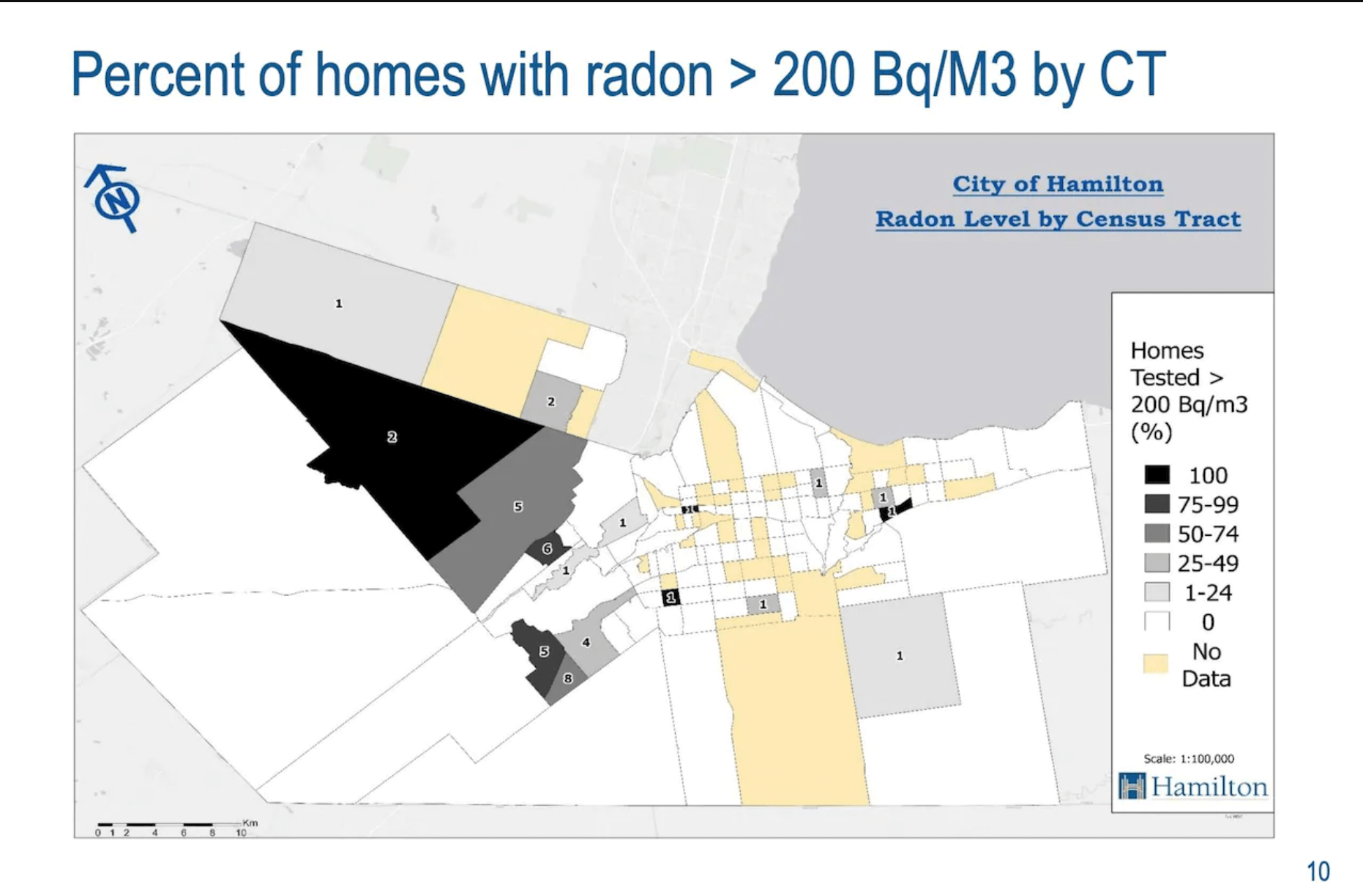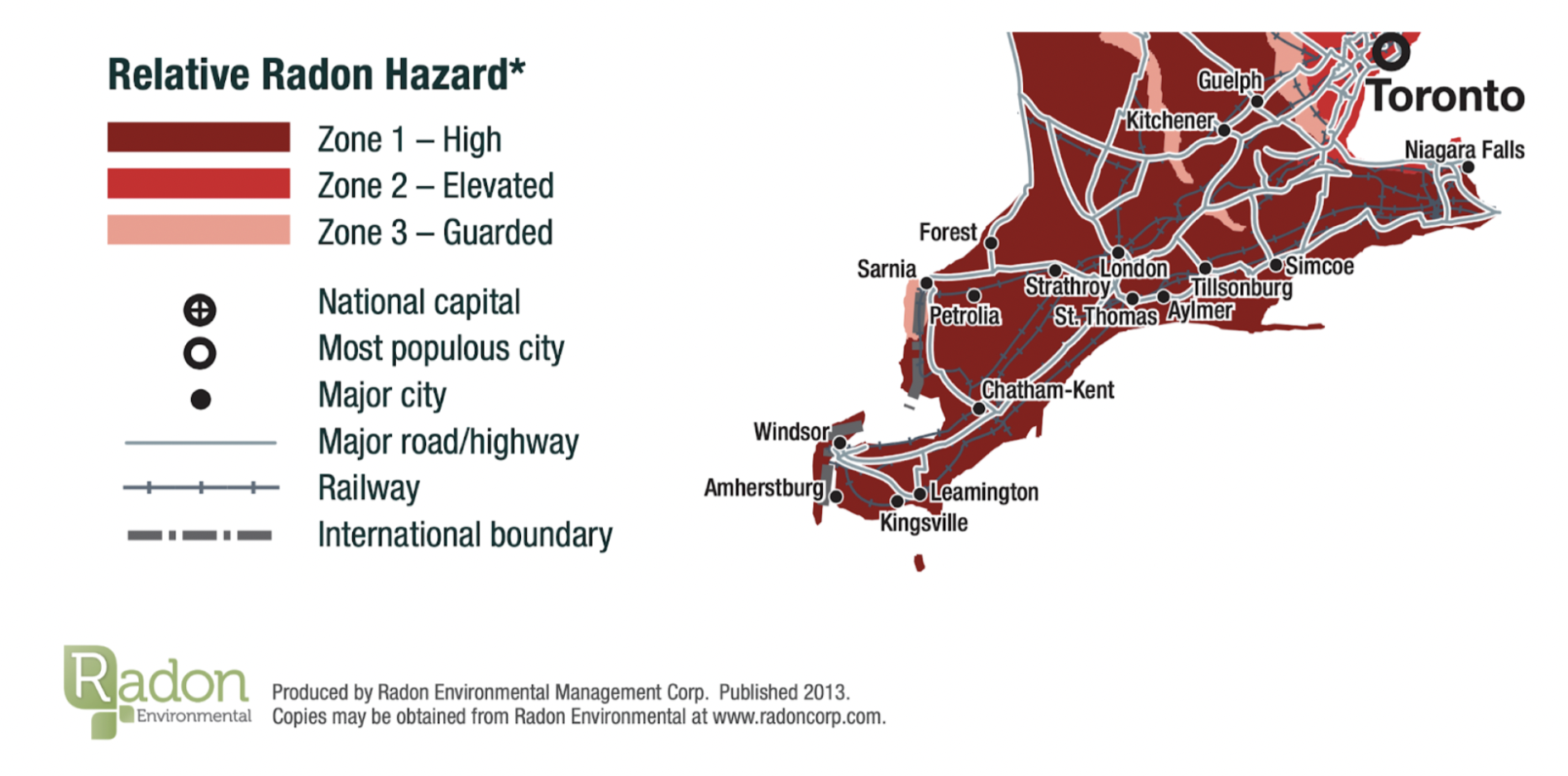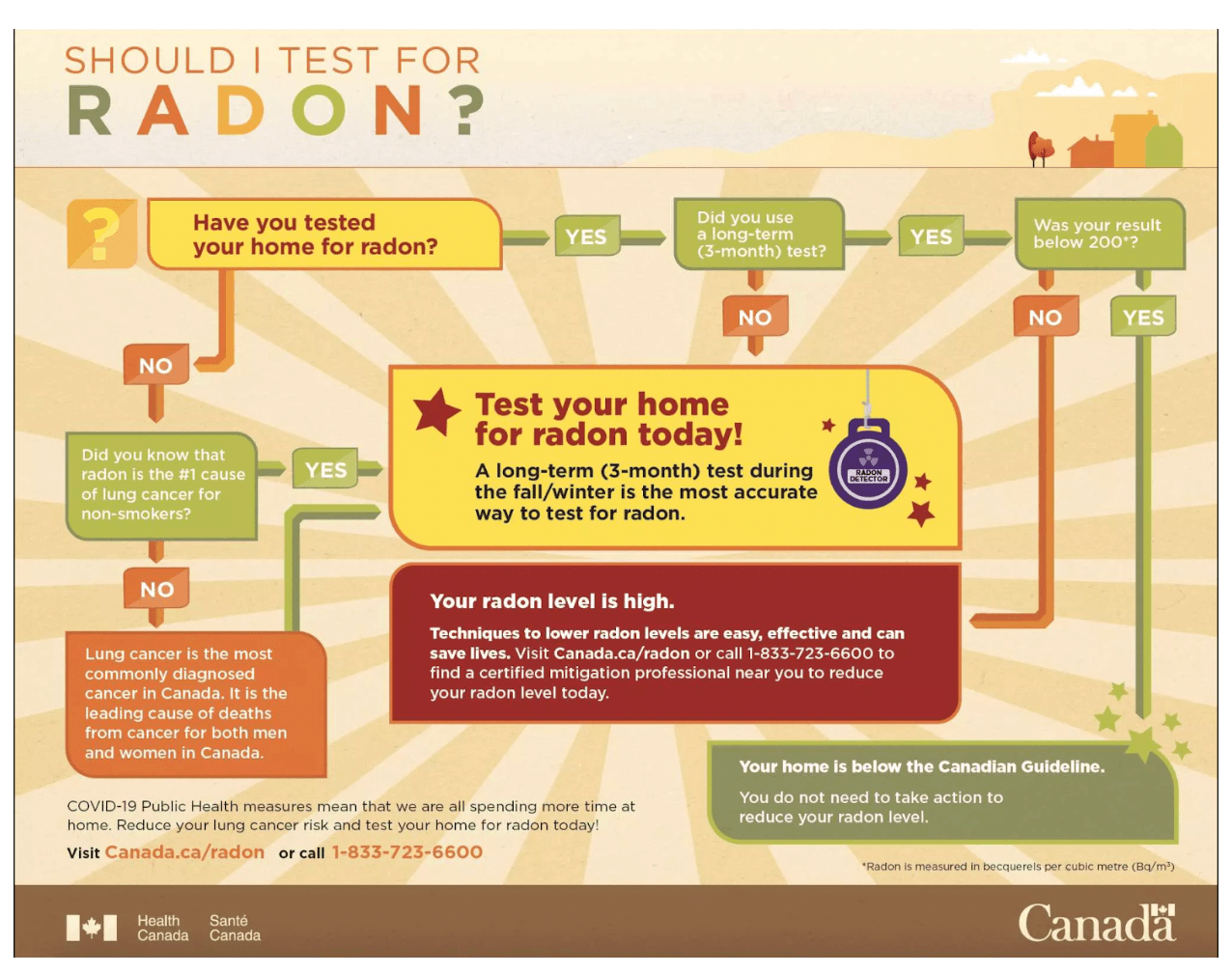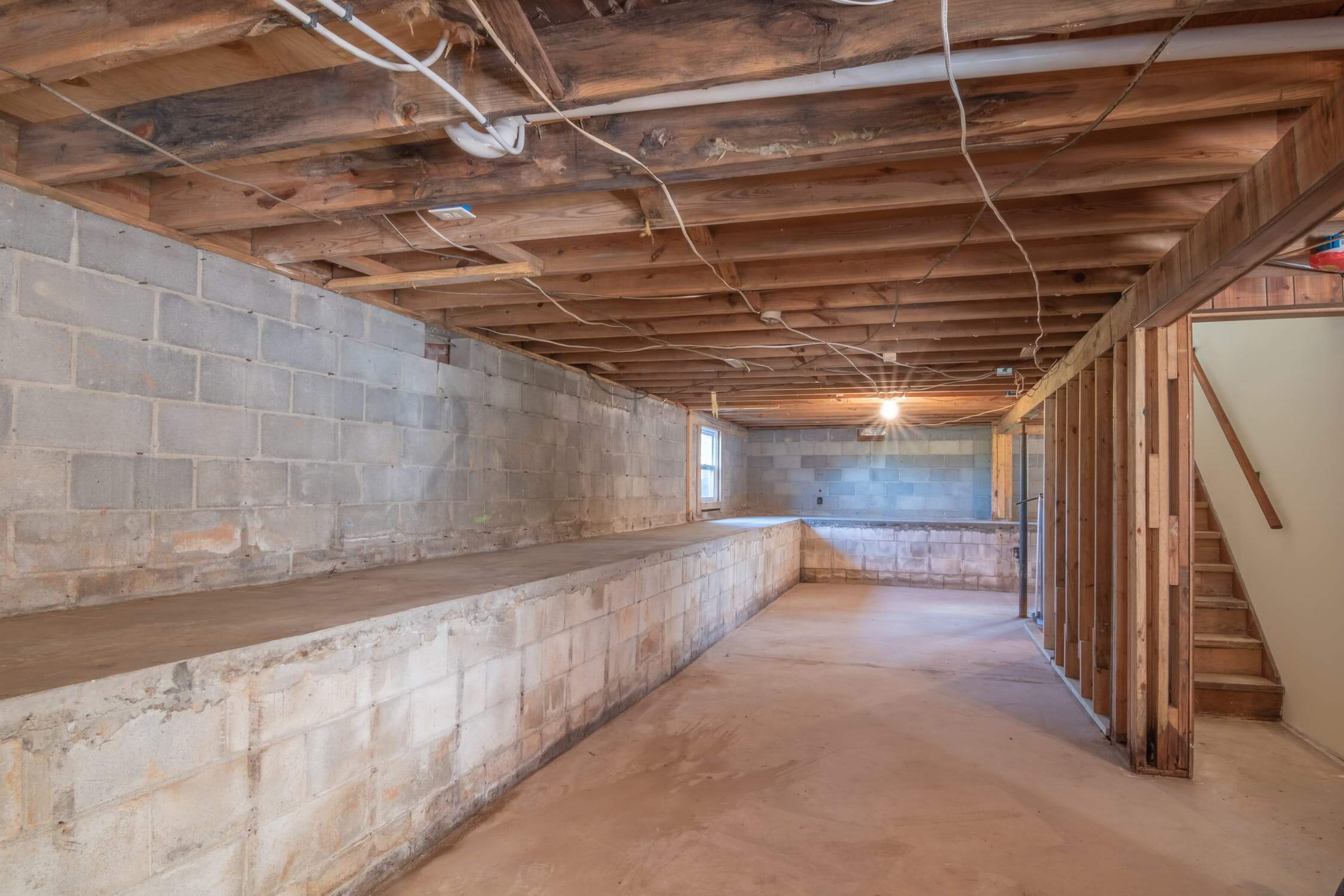Is there radon gas in your Hamilton home? Maybe you got a pamphlet in the mail that encouraged you to test, or heard your neighbours talking about radon gas. Radon gas exposure is an important topic for residents in Hamilton, Ontario.
A recent study by the Board of Health found that approximately 1 in 7 homes in Hamilton have triple the level of radon gas than the average Ontario home. Check out the radon gas Hamilton map below to see the results of Hamilton’s radon gas survey.
 Radon Gas Hamilton Map: City of Hamilton - Radon Level by Census Tract | Image Source: Hamilton Board of Health
Radon Gas Hamilton Map: City of Hamilton - Radon Level by Census Tract | Image Source: Hamilton Board of Health
This map shows the results of the survey, and uses colour coding to show you how many homes tested in certain areas had high levels of radon. This does not mean that every home in the area has higher levels.
However, it does mean that if you live in the black or darker grey areas, you are more likely to have radon levels that are above the Canadian guideline.
Even if the homes in your area tested relatively low for radon gas, that does not necessarily mean your home has low levels as well.
The same goes for average high levels - while some areas so generally have higher levels, the age of your home, foundation issues, and other factors impact how much radon gas enters your home. While your neighbour may have high levels, that doesn’t mean you will too.
If you’re ready to test your Hamilton home for radon gas, or you’ve found out you have high levels and need a mitigation system installed, contact the experts at the Radon Gas Guys.
We will help you through the entire process and offer a 100% guarantee to all of our customers. If our radon mitigation system does not reduce the levels below the Canadian standard, we will correct it at no cost or refund your money.
What Is Radon Gas?
It’s important to understand what radon gas is and why homeowners should determine if there is radon gas in their home.
Radon gas is considered a health hazard. It is similar to carbon monoxide in that it is tasteless, colourless, and odourless. This means that if there is excess radon gas in your home, you would not be able to tell. The only way you can determine if radon gas levels in your home are above average is if you conduct a radon gas test.
Unlike carbon monoxide, however, radon gas causes damage over prolonged exposure. Radon gas is radioactive. It naturally occurs in the environment, as it is produced when uranium (a heavy metal that occurs within the earth) decays. As uranium decays, it releases the radioactive gas called radon.
Did you know that radon gas is the number one cause of lung cancer in non-smoking individuals? When you breathe the radioactive gas into your lungs, the gas decays into radioactive particles. These particles emit energy. If that energy emits inside of your lungs, it damages lung tissue. This consistent damage over time increases your risk of lung cancer.
Radon Gas Hamilton Map - What Does This Mean For Me?
If you’ve taken a look at the radon gas Hamilton map above and see that your home is within the black or darker shades of grey areas, you may be wondering what exactly does that mean?
To answer this question, we’ll need to do a bit of a deeper dive into where the data included in the radon gas map comes from.
From 2009 - 2011, Health Canada conducted Canada-wide surveys to monitor the level of radon gas in the average home. This data was collected for cities across the nation.

Then, from 2019 - 2020, Hamilton conducted another survey to determine more updated and precise information about radon levels specifically in the Hamilton area. You can learn more about this survey from the Hamilton Board of Health here.
The radon gas Hamilton map we included at the beginning of this article shows the results from the recent 2019 - 2020 survey. The survey included 294 participants.
While there is no safe level of radon gas exposure, the Canadian guideline for radon gas in the home is 200 Bq/m3. The Hamilton survey found that 14.3% of homes tested had levels greater than 200 Bq/m3.
How To Test For Indoor Radon Gas Levels
Fortunately, it’s very easy to test for radon gas levels. Because radon gas is everywhere, you can’t just test for levels one time. You need to test the average levels of gas in your home over a longer period of time. To test for radon gas, you will need a radon gas kit.
This small device is installed in the lowest level of your home that spends, on average, a few hours per day in. Since radon gas is emitted from the ground, the lowest levels of your home will have the highest levels of radon gas.

For most homes with finished basements that get used regularly, that is where the detector will be installed. Otherwise, it may be installed on your main floor.
You can buy test kits and install them yourself. Or, you can have a professional radon gas mitigation company do it for you. While installation is fairly straightforward, there are benefits to hiring a professional.
For example, they will be able to talk to you to determine which level of your home is the best location for the test. They will also be able to properly install it. Since the test takes at minimum 3 months to complete, you’ll want to make sure you get the most accurate readings possible.
What Happens If I Have High Levels of Radon Gas In My Home?
After your test is complete, you will find out how much radon gas is in your home on average. If you have high levels of radon gas, you will need to get in touch with a professional radon mitigation company.
While radon gas is found everywhere, there are certain circumstances when levels in your home may be higher due to structural issues.
When you work with the Radon Gas Guys, the first step in the radon gas removal process is to ensure that any openings or areas in your home where radon gas could be seeping in from are fixed right away.

Issues are most often found in the basement, but any area of your home could have a problem that allows more radon gas to come into your home. Issues such as cracks in the foundation, poor sealing around openings, areas around sump pumps, hydro entry, and even plumbing openings can all cause radon gas to leak into your home in higher concentrations.
After any issues discovered are thoroughly taken care of, our experienced team will install the radon mitigation system. The mitigation system is most often installed in the basement. However, it could be installed on a different floor if required.
While a “mitigation system” may sound complicated, it is actually a fairly simple system and process. The installation only takes one day and will not cause significant disturbance to the rest of your home.
Radon gas mitigation systems consist primarily of a pipe and fan. This system is installed into the foundation of your home and works to remove radon gas by sucking it out from your indoor space and exhausting it outdoors.
And here’s some good news to know…if your home is less than 7 years old, your radon mitigation system is covered by your Tarion Warranty. So this means that if you have recently moved into a new build in Hamilton, you should conduct a radon test right away. This will help to ensure that your mitigation system is covered under warranty if elevated levels are detected.
Trust The Radon Gas Guys For Radon Gas Testing and Removal in Hamilton
We understand that finding out about radon gas in your home can feel stressful. We help provide Hamilton homeowners with the peace of mind knowing that their homes and families are safe from the dangers of radon gas.
When you choose the Radon Gas Guys, you will be working with a professional, experienced company that cares about homeowners in Hamilton and across Southern Ontario. We have a record of excellence and ensure all of our staff are fully trained to handle all mitigation jobs.
We have a 100% guarantee that our radon mitigation systems will work. If the radon mitigation system does not reduce the levels below the Canadian standard, we always fix it at no cost to you or refund your money. We guarantee it! We always stand by our work.
If you are worried about high levels of radon gas in your home in Hamilton and are ready for radon gas removal, give us a call. We are happy to talk with you to discuss all of your mitigation options and will walk through all steps moving forward.
Rick is an expert at his craft. He brought my radon levels so low that it was way beyond my expectations. His true workmanship was precise and once the job was done, he did a great job at cleaning up after himself. I would highly recommend Rick to anyone at anytime.